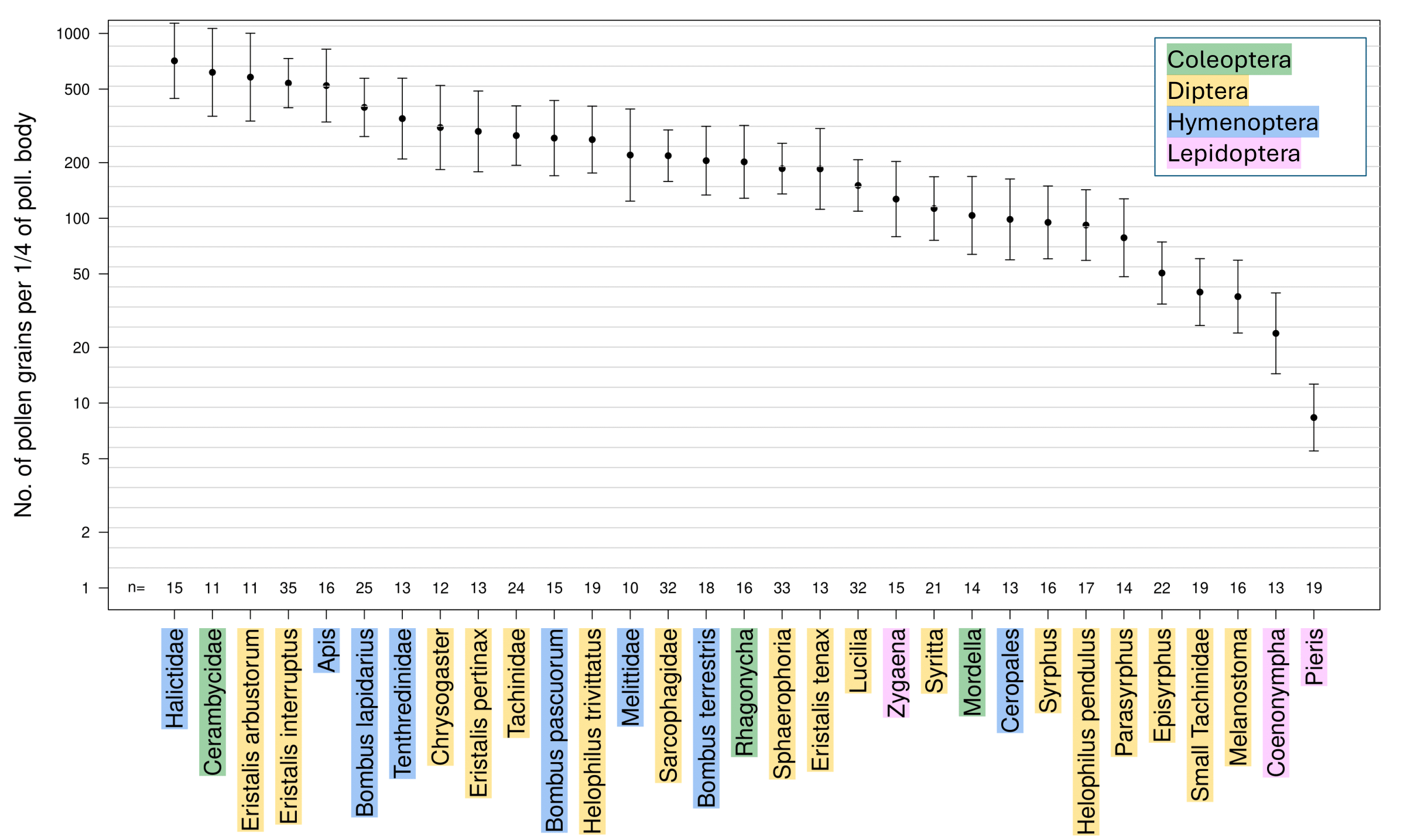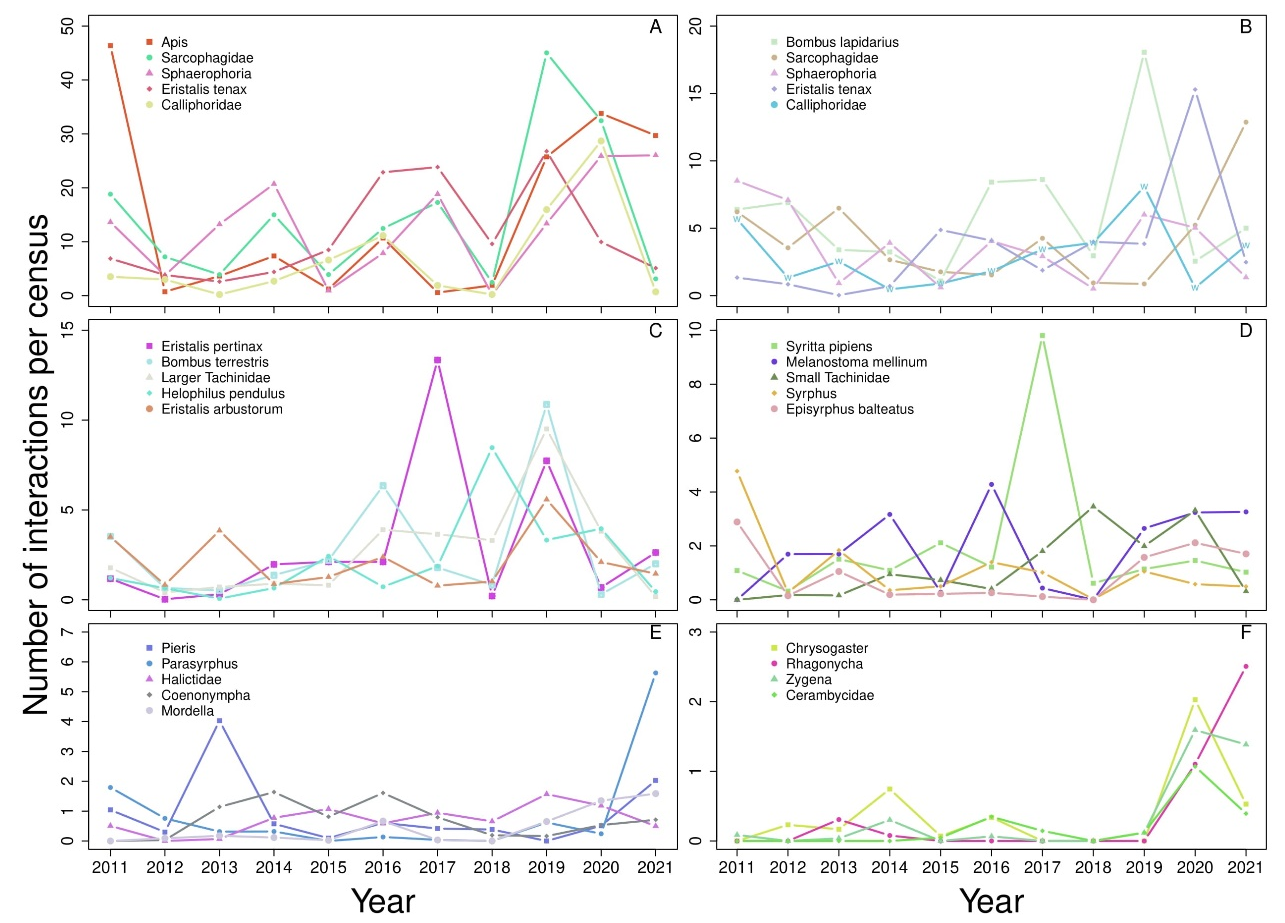Poster ECOFLOR 2025, Leon, Spain
Inerannual difference in pollinator contribution to pollen transfer
Martin Freudenfeld*, Jakub Štenc, Jiří Hadrava, Michael Mikát, Eva Matoušková, Klára Daňková, Tomáš Jor, Tadeáš Ryšan, Klára Koupilová, Jan Simon-Pražák, Tomáš Dvořák, Zdeněk Janovský
*Department of Botany, Charles University, Prague, CZ

Contacts:
Email: martinf13 at seznam.cz
Introduction
The contribution of pollinator to pollen transfer vary due to differences in ability to carry pollen depending on pollinator traits and variation in visitation density, i.e., abundance in relation to the number of flowering plants varying between pollinators due to differences in population size and visitation activity. Moreover, the abundance of different pollinators vary greatly between years due to rapid changes in insect population sizes. Understanding the variations in the contributions of pollinator taxa to pollen transfer over time is crucial to understanding the long-term community dynamics and could help in conserving pollination services amid pollinator decline.

Research Questions
How much pollinator contributions to pollen transfer depend on their ability to carry pollen and their abundance? How the pollen load vary among and within pollinator taxa? How the flower-visitation density vary year-to-year?
Methods
Pollen load on pollinator body
We collected pollen from a half of pollinator´s body with a small block of fuchsine jelly following Beatie (1972). Pollen grains were counted on microscope slides. Pollen in pollen baskets was not sampled as it does not reach plant stigmas.

Pollinator abundance:
93 permanent plots (4×4 m) evenly distributed over the meadow are censused for plant and pollinator densities following the same protocol every season since 2011. Only insects touching plant´s reproductive organs for at least 2 seconds are recorded as pollinators.
Results
Pollen load: The pollen amount carried on pollinator body varied among pollinator taxa, but the differences were small, and that such variability was mainly driven by intraspecific differences among individual pollinators
Abundance: The interaction density significantly differed among taxa and changed over the years. The abundance of pollinators fluctuated highly from year to year, being presumably responsible for the majority of the variation in the species-species importance of pollinators for a given plant species, and may lead to a high turnover in plant-pollinator interactions and pollen transfer.
Pollinator contributions to pollen transfer in our system depended on the amounts of pollen carried and the number of plant-pollinator interactions, which varied over time and over the years. Pollinator species diversity may be crucial in compensating for the variation in pollinator abundances at the community level

bb

Conclusions
→ No big variation in pollen load among pollinator
→ Huge differences in pollinator densities over the years
→ Each pollinator taxa is important and necessary for plant polination even in highly generalised meadow ecosystems!
